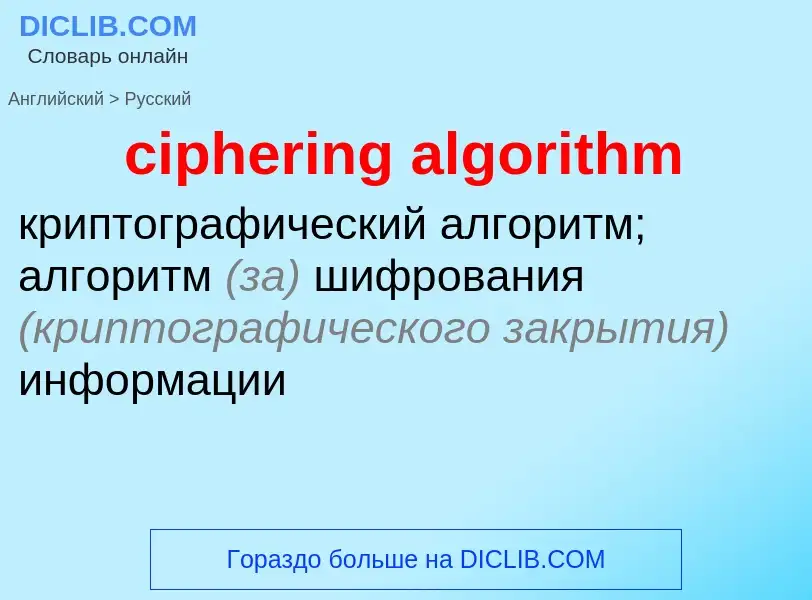Übersetzung und Analyse von Wörtern durch künstliche Intelligenz ChatGPT
Auf dieser Seite erhalten Sie eine detaillierte Analyse eines Wortes oder einer Phrase mithilfe der besten heute verfügbaren Technologie der künstlichen Intelligenz:
- wie das Wort verwendet wird
- Häufigkeit der Nutzung
- es wird häufiger in mündlicher oder schriftlicher Rede verwendet
- Wortübersetzungsoptionen
- Anwendungsbeispiele (mehrere Phrasen mit Übersetzung)
- Etymologie
ciphering algorithm - Übersetzung nach russisch
математика
алгоритмический метод
Wikipedia
The Tonelli–Shanks algorithm (referred to by Shanks as the RESSOL algorithm) is used in modular arithmetic to solve for r in a congruence of the form r2 ≡ n (mod p), where p is a prime: that is, to find a square root of n modulo p.
Tonelli–Shanks cannot be used for composite moduli: finding square roots modulo composite numbers is a computational problem equivalent to integer factorization.
An equivalent, but slightly more redundant version of this algorithm was developed by Alberto Tonelli in 1891. The version discussed here was developed independently by Daniel Shanks in 1973, who explained:
My tardiness in learning of these historical references was because I had lent Volume 1 of Dickson's History to a friend and it was never returned.
According to Dickson, Tonelli's algorithm can take square roots of x modulo prime powers pλ apart from primes.


![Alan Turing's statue at [[Bletchley Park]] Alan Turing's statue at [[Bletchley Park]]](https://commons.wikimedia.org/wiki/Special:FilePath/Alan Turing.jpg?width=200)




